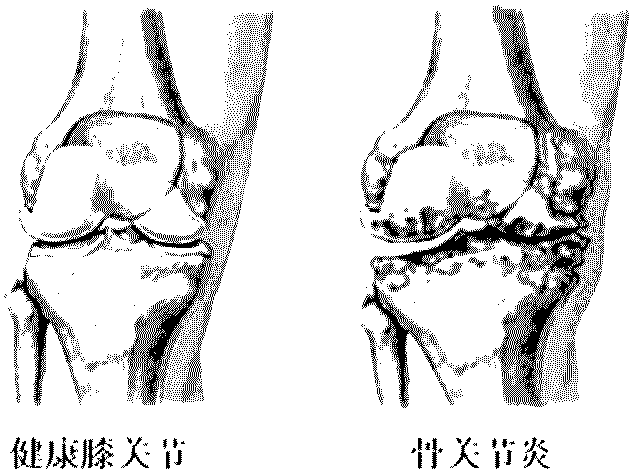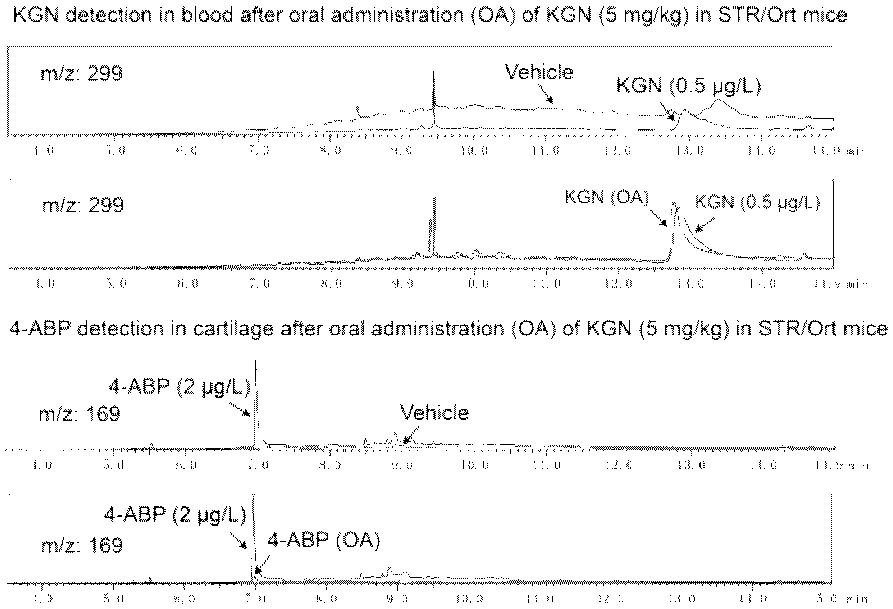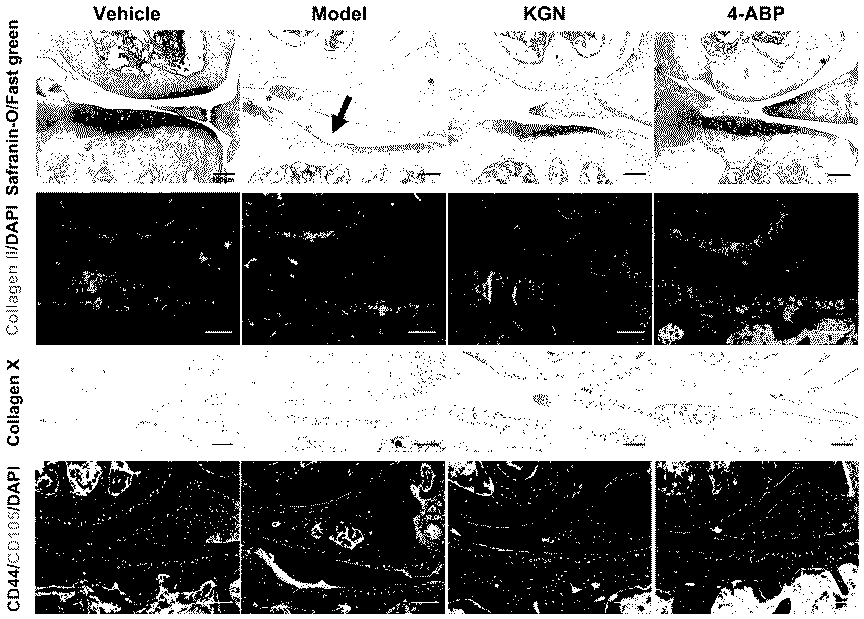Application of chemical small molecule 4-aminobiphenyl in prevention and treatment of osteoarthritis
An aminobiphenyl and osteoarthritis technology, applied in the field of cell medicine, can solve the problems of 4-aminobiphenyl arthritis, which have not been reported, and achieve the effect of improving cartilage regeneration ability and promoting cartilage repair and regeneration.
- Summary
- Abstract
- Description
- Claims
- Application Information
AI Technical Summary
Problems solved by technology
Method used
Image
Examples
Embodiment 1
[0033] The medial meniscal instability model (DMM) in this example can simulate the cartilage defect caused by arthritis.
[0034] 1) Take 36 10-week-old male C57BL / 6J mice for anesthesia, prepare the skin and disinfect the skin, incise the skin along the inner side of the knee joint, peel off the muscle tissue, push the joint cavity ligament to the outside, expose the femur and tibia, and separate the joint cavity The adipose tissue is used to expose the medial meniscal ligament, which is then cut with fine scissors, the ligament and muscle tissue are restored, the muscle and skin are sutured, and the joint cavity is sealed.
[0035] 2) Intramuscular injection of penicillin sodium (22000U / 100g) was given after the operation to prevent infection.
[0036] 3) The 12 C57BL / 6J mice in the sham operation group were only sutured after the joint cavity was opened, and the ligaments were not cut.
Embodiment 2
[0038] Intra-articular injection for the treatment of cartilage defects.
[0039] 1) One month after the DMM operation, the DMM-modeled mice were randomly divided into 3 groups, 12 in each group, namely: Model group (DMM modeled), KGN group (100 μM KGN injected intra-articularly after DMM modeled). ), 4-ABP group (intra-articular injection of 100 μM 4-ABP after DMM modeling).
[0040] 2) Medication treatment: intra-articular injection once a week for 4 consecutive weeks.
Embodiment 3
[0042] Detection of regenerative repair of articular cartilage tissue.
[0043] (1) Safranin fast green staining of bone tissue sections.
[0044] 1) Bake slices at 50~60°C for 2 hours.
[0045] 2) Dewaxing and rehydration: dewax with xylene Ⅰ and Ⅱ for 10 minutes respectively, then rehydrate with 100% ethanol, 100% ethanol, 95% ethanol, 85% ethanol, 70% ethanol, and 50% ethanol for 5 minutes respectively, and rinse with running water 5min.
[0046] 3) Fast green staining: 0.05% fast green staining for 1~5min; 1% glacial acetic acid quick washing for 10s~1min; deionized water to clean the remaining acid solution, observe the fast green staining under a microscope, if the coloring is light, re-stain.
[0047] 4) Safranin staining: stain with 0.5% safranin O for 5-10 minutes; decolorize with 95% ethanol for 30 seconds, observe the staining condition under a microscope, if the staining is satisfactory, continue, otherwise wash with water and re-stain.
[0048] 5) Dehydration a...
PUM
 Login to View More
Login to View More Abstract
Description
Claims
Application Information
 Login to View More
Login to View More - R&D
- Intellectual Property
- Life Sciences
- Materials
- Tech Scout
- Unparalleled Data Quality
- Higher Quality Content
- 60% Fewer Hallucinations
Browse by: Latest US Patents, China's latest patents, Technical Efficacy Thesaurus, Application Domain, Technology Topic, Popular Technical Reports.
© 2025 PatSnap. All rights reserved.Legal|Privacy policy|Modern Slavery Act Transparency Statement|Sitemap|About US| Contact US: help@patsnap.com



